如何将Excel中表结构数据自动生成SQL脚本的方法
Posted
tags:
篇首语:本文由小常识网(cha138.com)小编为大家整理,主要介绍了如何将Excel中表结构数据自动生成SQL脚本的方法相关的知识,希望对你有一定的参考价值。
参考技术A 一: 在本地PC新建一个Excel文件(例如:excel2007)准备工作,左键选择excel文本左上角的图标,选择“Excle选项”。1. 点击“信任中心”->“信任中心设置”->“宏设置”->选择“启用所有宏...”选项。“开发人员宏设置”选项也勾选上。 2. 点击“信任中心”->“信任中心设置”->选择“个人信息选项”,将“文档特定设置”上面默认选择去掉,避免在保存脚本时报错。
二: 在本地PC新建一个excel文件(例如: D:\testdate.xlsx)
按快捷键“ALT + F11”进入宏编辑,输入如下代码后保存。summary()为目标生成代码,SQL()为生成SQL脚本文件代码,按条件生成SQL的脚本如下:
Sub summary()
Dim i As Integer
i = 2
ThisWorkbook.Worksheets(1).Columns(2).Clear
For Each sh In ThisWorkbook.Worksheets
If sh.Name <> " " Then
ThisWorkbook.Worksheets(1).Cells(i, 2).Value = sh.Name
ThisWorkbook.Worksheets(1).Cells(i, 2).Select
ActiveSheet.Hyperlinks.Add Anchor:=Selection, Address:="", SubAddress:= _
sh.Name + "!A1", TextToDisplay:=sh.Name
i = i + 1
End If
Next sh
ThisWorkbook.Worksheets(1).Cells.Select
With Selection.Font
.Name = "目录"
.Size = 9
.Strikethrough = False
.Superscript. = False
.Subscript. = False
.OutlineFont = False
.Shadow = False
.TintAndShade = 0
.ThemeFont = xlThemeFontNone
End With
End Sub
Sub SQL()
Dim i As Integer
i = 1
Dim ADO_Stream As Object
Dim strSQL, strDelSQL As String
Dim strTblName As String
Dim col As Long
Dim row As Long
Dim str As String
Dim PK As String
Dim cnt As Integer
PK = "PK"
Dim rowcounts As Long
rowcounts = 0
Dim filecount As Long
filecount = 0
Set ADO_Stream = CreateObject("ADODB.Stream")
ADO_Stream.Type = 2
ADO_Stream.Mode = 3
ADO_Stream.Charset = "unicode"
ADO_Stream.Open
Dim checkType As String
For Each sh In ThisWorkbook.Worksheets
cnt = 0
If sh.Name <> " " And InStr(sh.Name, "template") = 0 Then
strTblName = sh.Cells(1, 2).Value
rowcounts = 1
'Insert SQL
row = 6
Do While sh.Cells(row, 1).Value <> ""
strDelSQL = "delete from " + strTblName + " where "
strSQL = "Insert into " + strTblName + " ("
col = 1
Do While sh.Cells(3, col).Value <> ""
If col <> 1 Then
strSQL = strSQL + ", "
End If
strSQL = strSQL + sh.Cells(3, col).Value
col = col + 1
Loop
strSQL = strSQL + ") VALUES ("
col = 1
Do While sh.Cells(3, col).Value <> ""
str = Trim(CStr(sh.Cells(row, col).Value))
If InStr(Trim(CStr(sh.Cells(2, col).Value)), PK) <> 0 Then
If cnt > 0 Then
strDelSQL = strDelSQL + " and "
End If
strDelSQL = strDelSQL + Trim(CStr(sh.Cells(3, col).Value)) + " = '" + str + "'"
cnt = cnt + 1
End If
If col <> 1 Then
strSQL = strSQL + ", "
End If
If (InStr(Trim(CStr(sh.Cells(4, col).Value)), "Integer") = 0) And (InStr(Trim(CStr(sh.Cells(4, col).Value)), "Decimal") = 0) And ((InStr(Trim(CStr(sh.Cells(4, col).Value)), "DATE") = 0) Or _
((Len(str) > 0) And (InStr(Trim(CStr(sh.Cells(4, col).Value)), "DATE") > 0))) Then
If (Len(str) <= 0) And (InStr(Trim(CStr(sh.Cells(5, col).Value)), "No") = 0) Then
str = "NULL"
ElseIf InStr(Trim(CStr(sh.Cells(4, col).Value)), "DATE") > 0 Then
str = "to_date('" + str + "','yyyy-mm-dd hh24:mi:ss')"
Else
str = "'" + str + "'"
End If
strSQL = strSQL + str
ElseIf (Len(str) <= 0) And (InStr(Trim(CStr(sh.Cells(4, col).Value)), "DATE") > 0) Then
strSQL = strSQL + "NULL"
Else
If (Len(str) <= 0) And (InStr(Trim(CStr(sh.Cells(5, col).Value)), "No") = 0) Then
str = "NULL"
End If
strSQL = strSQL + str
End If
col = col + 1
Loop
strDelSQL = strDelSQL + ";" + vbCrLf
ADO_Stream.WriteText strDelSQL
strSQL = strSQL + ");" + vbCrLf
ADO_Stream.WriteText strSQL
row = row + 1
Loop
End If
i = i + 1
rowcounts = 0
filecount = 0
Next sh
ADO_Stream.SaveToFile ThisWorkbook.Path & "\MstSQL(delete by condition).txt", 2
ADO_Stream.Close
Set ADO_Stream = Nothing
End Sub
点击“保存”宏脚本,主要的一步完成。
三: 在excel文件(test.xlsx)的首页创建两个图标,分别选择右键指定宏,一个指定上面的summary(),一个指定上面的SQL()。然后就可以在后续的sheet页创建自己需要生成SQL脚本的表结构名称了,记得每个sheet页面对应一个表结构及数据,使用方法如下:
A,将需要更新的对象表数据整个sheet拷进工具中,数据只保留需要更新的数据。
B,在第2行标出主键字段,填上“PK”即可。
看看代码
http://www.51testing.com/html/41/195041-831346.html本回答被提问者采纳
使用vba程序,实现excel数据库模板生成sql数据库结构
@
最近公司有个需求,提前让数据库表结构在excel模板中设计,然后再建对应的数据库DB。字段少好说,无脑录入即可,但是,我遇到个100多个字段的,实在忍不了,最终入门了VBA编程,自己写脚本生成了sql语句。减少了需要无用重复劳动。
VBA基础
首先学习下vba的基础。
一.了解VBA
1.进入vba
alt + f11
文件 - 选项 - 自定义功能区 - 勾选开发工具
2.认识宏
-
录制宏
-
使用相对应用录制宏
二. VBA编程
1.hello world
双击某个sheet页, 把鼠标放在 窗口里面,点击工具栏的插入,选择过程,随便起个过程名,比如 class就生成了代码:
Public Sub class()
End Sub
写个hello world程序:
Sub class()
Dim name
name = "Hello World"
name = "胡老师好"
MsgBox name
End Sub
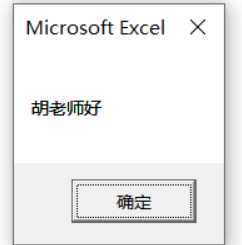
2.调出立即窗口和本地窗口
在工具栏中选择 选择立即窗口,和本地窗口。
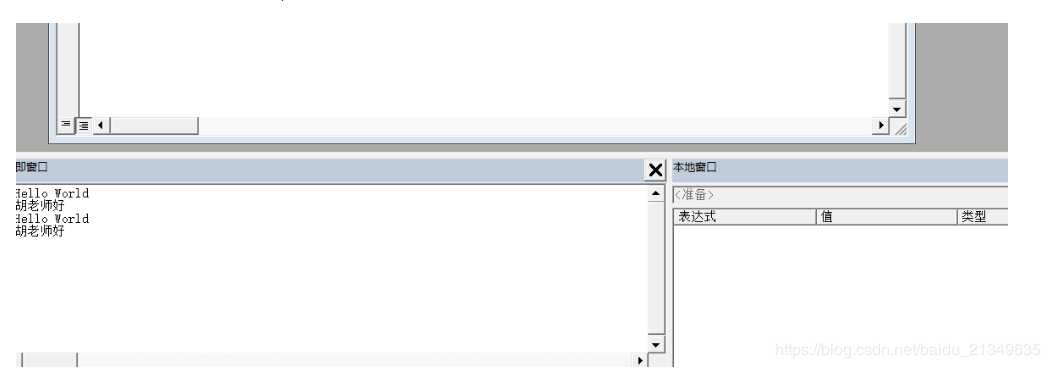
3.debug显示
Sub class()
Dim name
name = "Hello World"
Debug.Print name
name = "胡老师好"
MsgBox name
Debug.Print name
End Sub

4.注释
注释有2种形式,一种是rem。一种是 ‘ (单引号)

5.数据类型
variant 代表任意类型
single double decimal 代表 小数、
rem 代表注释关键字
Const 常量关键字
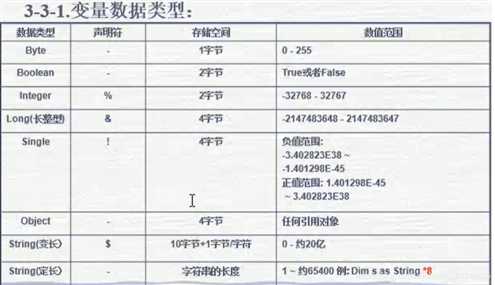

Sub class()
Rem variant是任意类型
Dim name As Variant
name = "Hello World"
Rem debug
Debug.Print name
name = "胡老师好"
Debug.Print name
Rem 定义常量
Const num As Integer = 123
Debug.Print num
End Sub
5.变量的生命周期和定义域
- 定义域: public 和 private
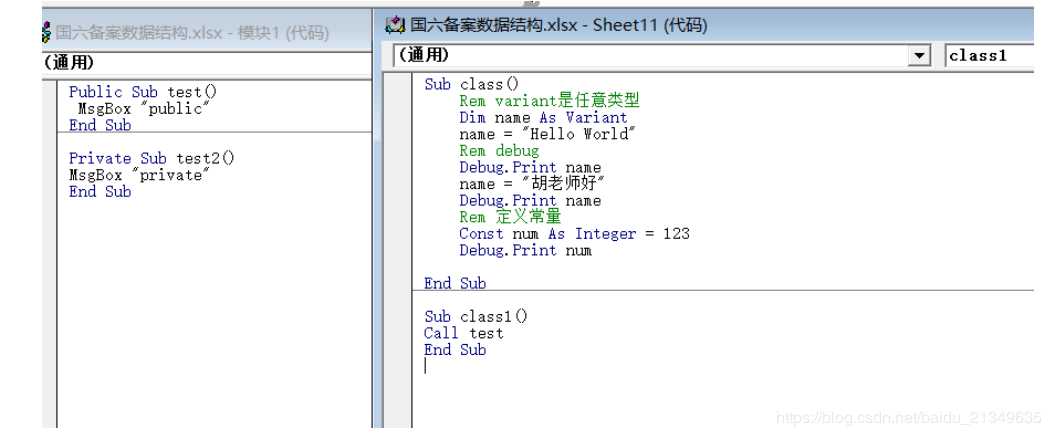
- static 是静态变量
Sub class1()
Dim x As Integer
Rem static 是静态变量
Static y As Integer
x = x + 1
y = y + 1
Debug.Print "x=" & x
Debug.Print "y=" & y
End Sub
6.判断语句
Sub class3()
Dim number As Integer
number = 1
If number > 100 Then
Debug.Print "优秀"
ElseIf number > 95 Then
Debug.Print "良好"
Else
Debug.Print "一般"
End If
End Sub
7.不等于<> , switch case 条件判断
- <> 不等于
Sub class3()
Dim number As String
number = "匹配"
If number > "匹配" Then
Debug.Print "优秀"
ElseIf number <> "匹配" Then
Debug.Print "良好"
End If
End Sub
- switch case
Sub class4()
Dim number As String
number = "匹配"
Select Case number
Case "匹配"
Debug.Print "匹配"
Case "不匹配"
Debug.Print "不匹配"
End Select
End Sub
- boolean类型的使用
Sub class5()
Dim count As Integer
Dim if_f As Boolean
count = 11
if_f = (count = 10)
MsgBox if_f
End Sub
8.循环
- 最简单的循环
Sub class()
Rem 演示循环
Dim count As Integer
For count = 1 To 10
Debug.Print count
Next
Debug.Print "count 循环结束之后的值是 " & count
End Sub

-
循环控制单元格属性
Sub class() Rem 演示循环 Dim count As Integer For count = 2 To 10 If count Mod 2 = 0 Then Rem rang函数代表选中的某列单元格 Rem Interior代表单元格内部的对象 Range("T" & count).Interior.ColorIndex = 1 Else Range("T" & count).Interior.ColorIndex = 3 End If Next Debug.Print "count 循环结束之后的值是 " & count End Sub
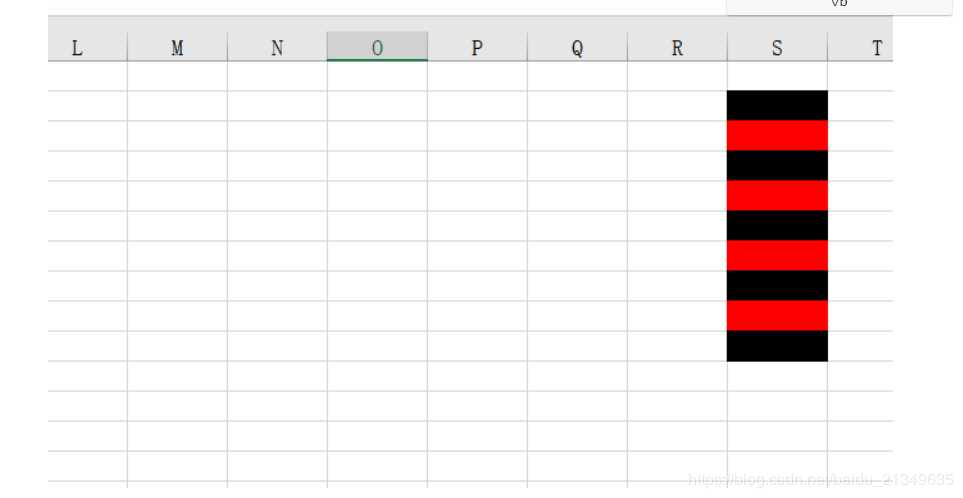
-
循环控制单元格求和
Sub class() Rem 演示循环 Dim COUNT As Integer Dim score As Double For COUNT = 2 To 20 Rem cells的参数 第一个参数代表横行,第2个参数代表竖行 Cells(COUNT, 8) = "=sum(rc[-1]:rc[-6])" Next End Sub

- 循环单元格操作+if
Sub class()
Rem 演示循环
Dim COUNT As Integer
Dim score As Double
For COUNT = 2 To 20
Rem cells的参数 第一个参数代表横行,第2个参数代表竖行
Cells(COUNT, 8) = "=sum(rc[-1]:rc[-6])"
score = Cells(COUNT, 8)
If score > 700 Then
Cells(COUNT, 9) = "秀儿"
ElseIf score > 650 Then
Cells(COUNT, 9) = "良好"
Else
Cells(COUNT, 9) = "小垃圾"
End If
Next
End Sub
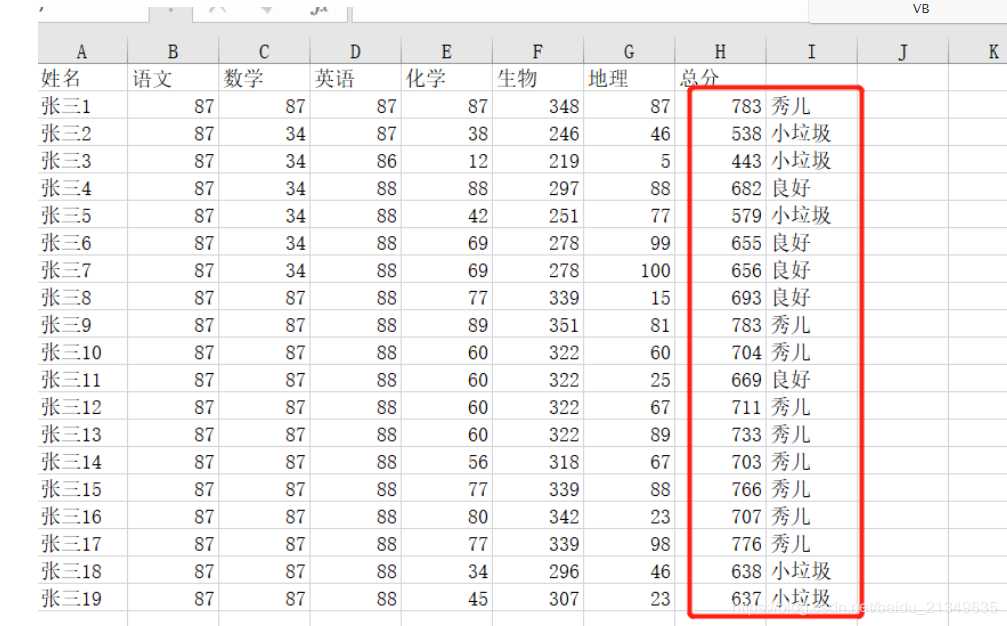
do while
Sub class()
Rem do while 演示
Dim count As Integer
count = 20
Do While count > 10
Debug.Print count
count = count - 1
Debug.Print count
Loop
Rem do .. loop 条件 不演示了
Do
Loop While count > 10
End Sub

退出循环的语句 exit for
使用for循环的时候退出用 exit for
Sub class1()
Dim count As Integer
For count = 1 To 10
If count = 5 Then
Debug.Print "count 退出循环的值是: " & count
Exit For
End If
Debug.Print count
Next
End Sub

退出循环的语句 exit do
使用fo while循环的时候退出用 exit do
Sub class1()
Dim count As Integer
Do While True
count = count + 1
If count > 5 Then
Debug.Print "此时退出循环的值是: " & count
Exit Do
End If
Loop
End Sub

9.数组
Sub class()
Dim arr(2) As Variant
Dim i As Integer
arr(0) = "小明"
arr(1) = 2
arr(2) = True
For i = 0 To 2
Debug.Print arr(i)
Next
End Sub

-
下标越界
Sub class() ‘ Const i As Integer = 10 ‘ Dim arr(i) As Variant Rem 可以指明数组的范围奥 起始开始限制了也是下标越界 Dim arr(2 To 5) As Variant arr(1) = 1 Debug.Print arr(1) End Sub
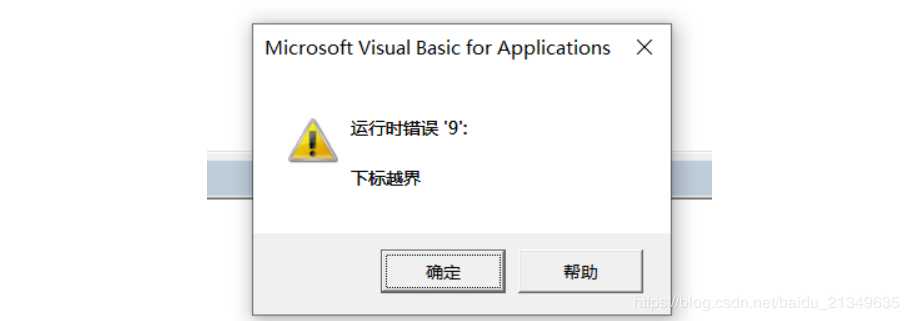
10.二维数组
Sub class()
Dim arr(2 To 5, 3 To 6) As Variant
arr(2, 3) = 1
Debug.Print arr(2, 3)
End Sub

-
遍历循环
Sub class() Dim arr(2 To 5, 3 To 6) As Variant arr(2, 3) = 1 ‘Debug.Print arr(2, 3) For x = 2 To 5 For y = 3 To 6 Debug.Print arr(2, 3) Next Next End Sub
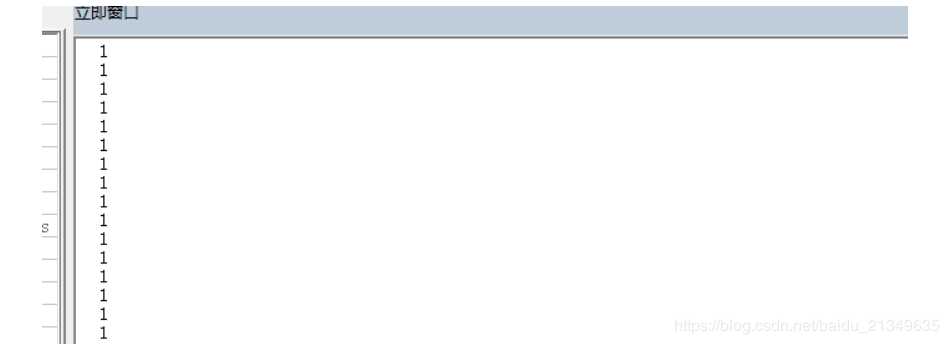
11.操作单元格
2中方式,一种是range,一种是cells
range

cells
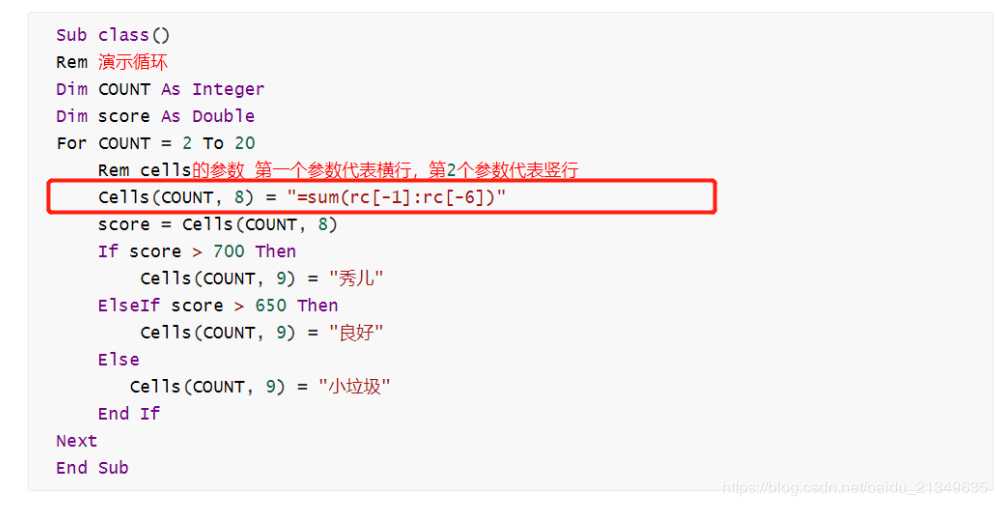
实战
现在掌握了上面的基础知识,基本上可以满足我们最开始的需求
解决思路:循环方式获取单元格中的内容,拼接成 sql 的创建脚本语句即可。
自定义vba脚本生成sql
- 原来的excel模板内容:
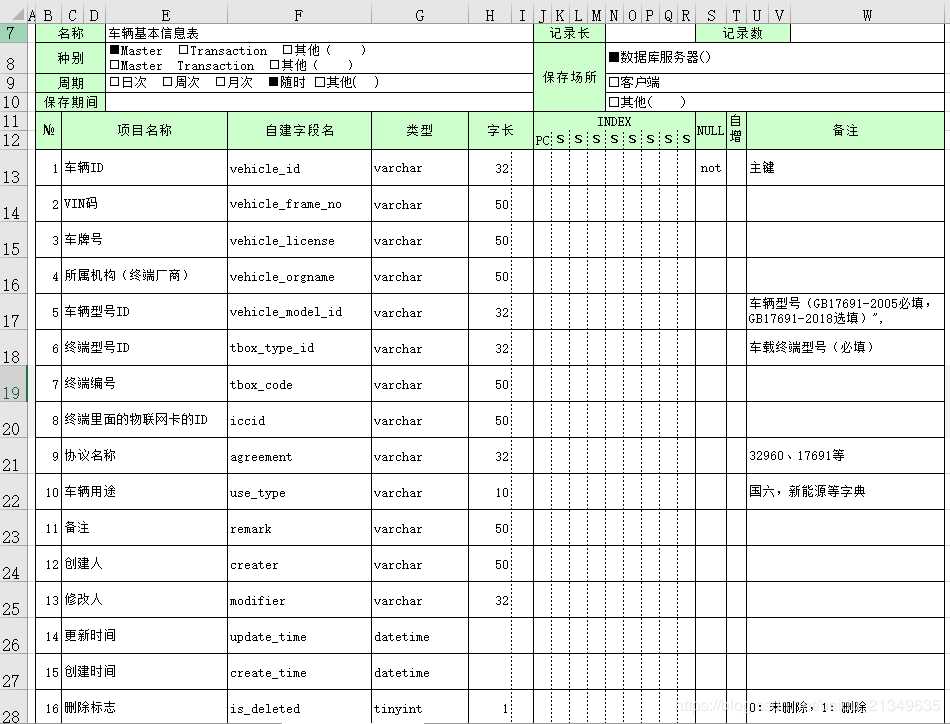
- 目标:输出sql创建表的语句:
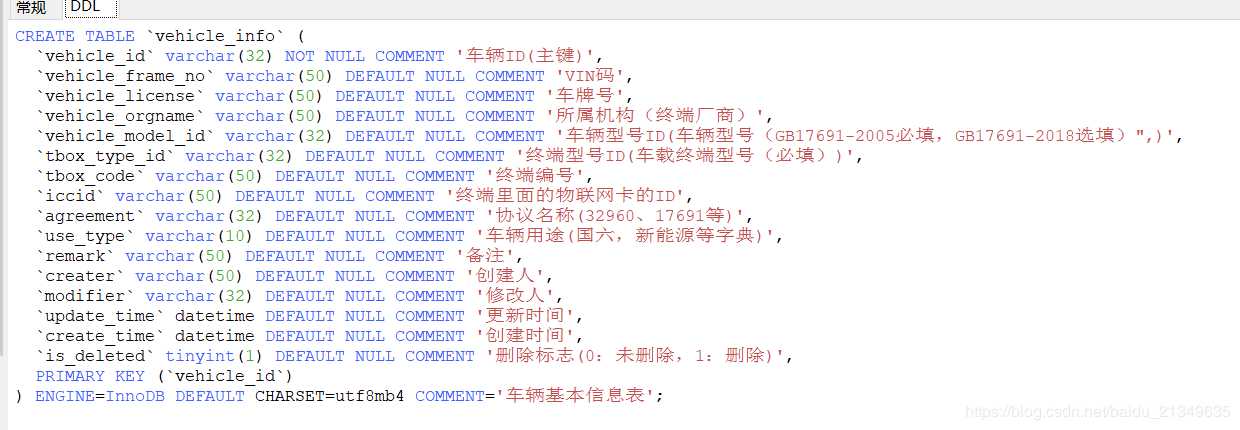
具体实现的脚本:
Public Sub class()
Rem 声明字段row的开始行号
Const startRow As Integer = 13
Rem 声明字段row的结束行号
Const endRow As Integer = 28
Rem 声明表名
Dim tableName As String
tableName = Range("E" & 6)
Rem 声明主键
Dim primaryKey As String
primaryKey = Range("F" & 13)
Rem 声明表名注释
Dim tableComment As String
tableComment = Range("E" & 7)
Rem 声明字段名对应列 英文序号
Dim filedMetaNo As String
filedMetaNo = "F"
Rem 声明字段注释对应对应列 英文序号
Dim commentMetaNo As String
commentMetaNo = "C"
Rem 声明字段备注 对应列的 英文序号
Dim comment2MetaNo As String
comment2MetaNo = "U"
Rem 声明类型 对应列的 英文序号
Dim typeMetaNo As String
typeMetaNo = "G"
Rem 声明字长 对应的列的英文序号
Dim lengthMetaNo As String
lengthMetaNo = "H"
Rem 最终要拼接的sql
Dim sqlStr As String
sqlStr = "CREATE TABLE " & Range("E" & 6) & Chr(13)
sqlStr = sqlStr & "(" & Chr(13)
For count = startRow To endRow
Rem 拼接 字段名
sqlStr = sqlStr & Replace(Range(filedMetaNo & count).Text, " ", "")
Rem 拼接 字段类型(字段长度)
sqlStr = sqlStr & " " & Range(typeMetaNo & count)
If IsEmpty(Range(lengthMetaNo & count)) = False Then
sqlStr = sqlStr & "(" & Range(lengthMetaNo & count) & ") "
End If
Rem 如果是主键,设置NOT NULL COMMENT
If primaryKey = Range(filedMetaNo & count) Then
sqlStr = sqlStr & " NOT NULL COMMENT "
Else
Rem 拼接 DEFAULT NULL COMMENT ‘字段名称注释(字段备注)‘
sqlStr = sqlStr & " DEFAULT NULL COMMENT "
End If
sqlStr = sqlStr & "‘" & Range(commentMetaNo & count)
If IsEmpty(Range(comment2MetaNo & count)) = False Then
sqlStr = sqlStr & "(" & Range(comment2MetaNo & count) & ")"
End If
sqlStr = sqlStr & "‘"
sqlStr = sqlStr & "," & Chr(13)
Next
sqlStr = sqlStr & "PRIMARY KEY (" & primaryKey & ")" & Chr(13)
sqlStr = sqlStr & ")ENGINE=InnoDB DEFAULT CHARSET=utf8mb4 COMMENT=‘" & tableComment & "‘" & Chr(13)
Debug.Print sqlStr
End Sub
显示结果:
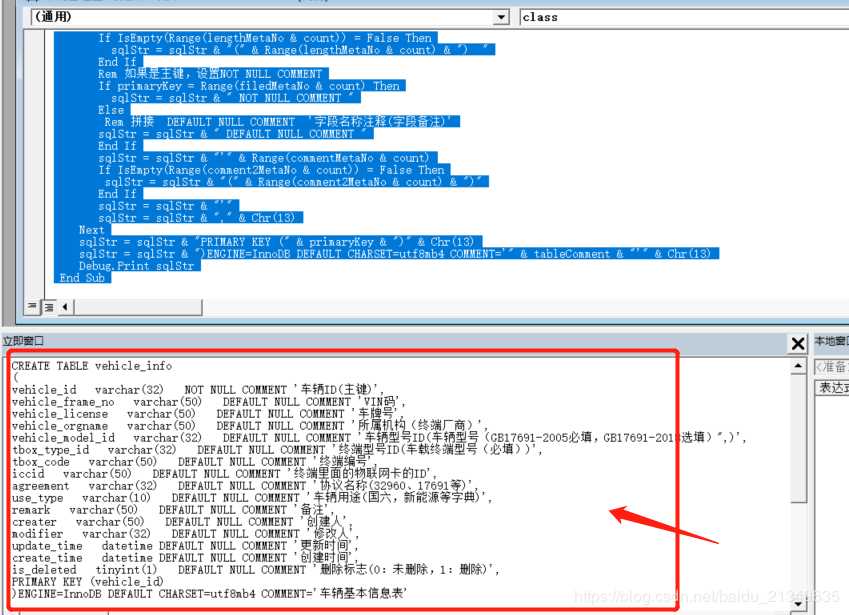
在navicat中运行
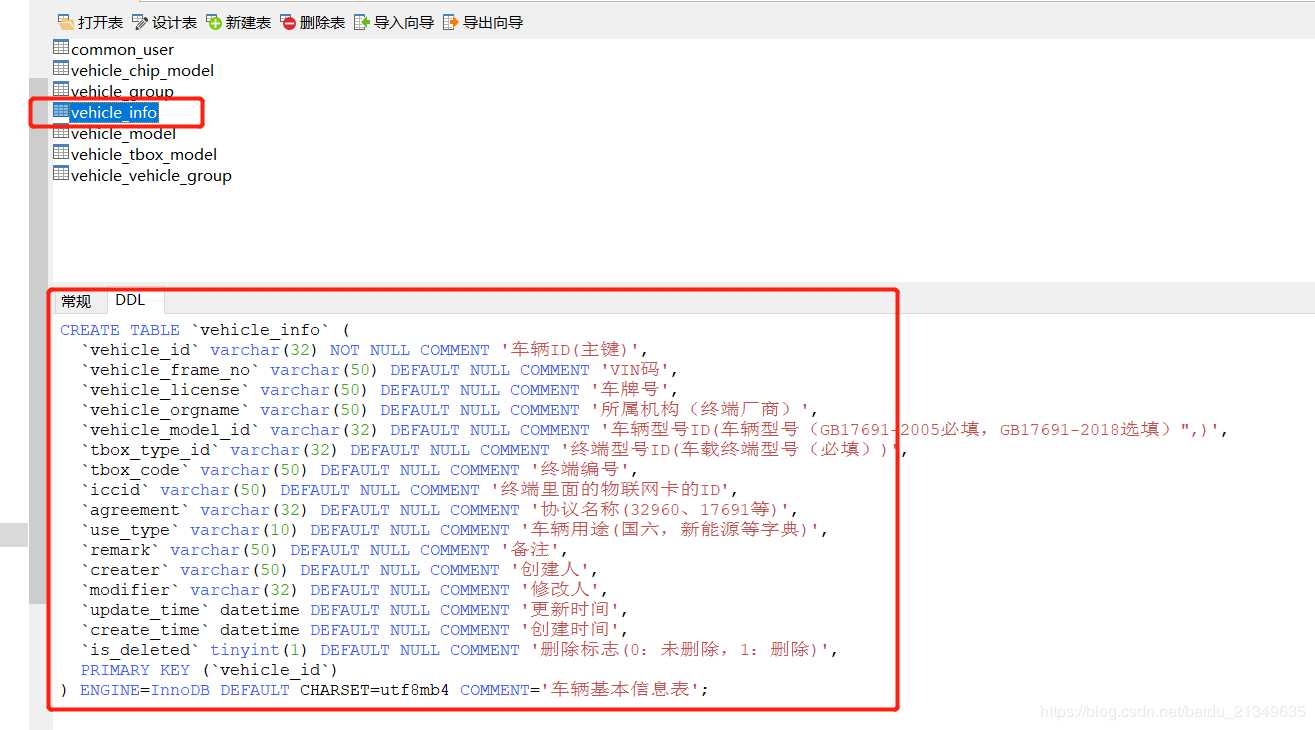
显示已经把mysql数据库的表结构导入数据库了。
见证奇迹的时刻(如何使用脚本)
脚本只需要改一个地方:

对应这里的行号:

即可。
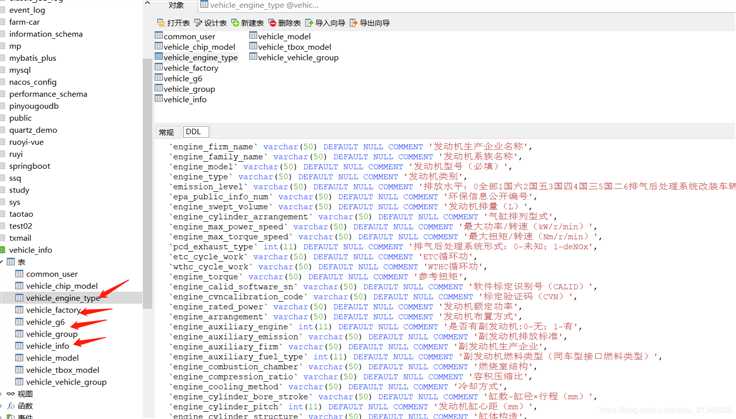
以上即是用脚本生成的4张表效果图。
个人微信公众号:
搜索: 怒放de每一天
不定时推送相关文章,期待和大家一起成长!!

完
谢谢大家支持!
以上是关于如何将Excel中表结构数据自动生成SQL脚本的方法的主要内容,如果未能解决你的问题,请参考以下文章
使用vba程序,实现excel数据库模板生成sql数据库结构
使用vba程序,实现excel数据库模板生成sql数据库结构